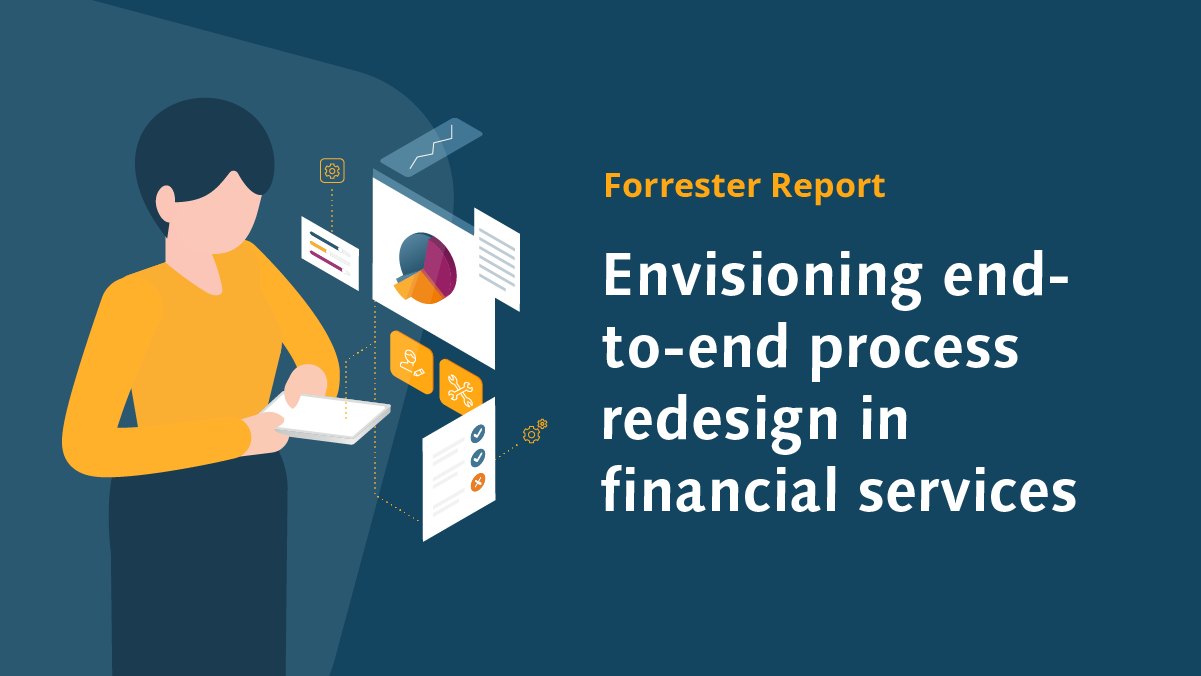
I was delighted to contribute to a recent report from Forrester, Envisioning End-To-End Process Redesign in Financial Services, which demonstrated the urgency for change in financial services. While much of the discussion around automation is centred around efficiency and cost-saving, the true driver for this change is to meet customer expectations.
The expert team at Forrester highlighted that a process redesign strategy should "create a more efficient connection between customer and capital". It is important to bring the customer into the strategy because it eliminates some of the challenges that have caused delays to digital banking. Previously, legacy technology and manual processes were often put in the centre of the strategy and this held back innovation and progress.
Customer expectations keep changing
Another challenge for financial institutions is that customer expectations continue to evolve. Organisations can become mired in the struggle to overcome the current requirements and lack the agility to respond to the market. This is why end-to-end process design is so important; if systems and processes continue to be built around products instead of customers, they will always be several steps behind the market demand. This leaves a gap for new entrants in the market.
Successful digital transformation
There are three key elements for a successful digital transformation. The first, as mentioned, is that the innovation should improve the customer experience. Closely related to this idea is that any change should enhance the products and services provided. This means that rather than simply replicating existing services online, it’s important to explore and deliver against the added value that digital channels can provide, including more convenient 24/7 communication channels and live information. The third aspect is, as Forrester states, to "change the way work gets done". This is perhaps the area that can meet the most resistance because many people fear that they could automate their role out of existence. Part of the change must be to galvanise the team to act and remain current in the market.
Staff involvement in a zero back office (ZBO) strategy
It is not just the scale of the challenge relating to process redesign that can cause inertia in large financial institutions. Staff resistance to change can mean that the customer gets forgotten, but truly successful digital transformation will elevate existing back-office staff to perform higher value tasks and this, in turn, could be a better career opportunity in the long term. As I stated in the report:
"Automation frees the middle layer to focus on more interesting work when they are unburdened by the management issues associated with manual processes."
Digital transformation can be liberating for staff. The increased agility and responsiveness of the organisation could boost creativity and motivation as the team currently maintaining the processes take ownership of the transformation. Once these benefits are realised by financial institutions and their teams, we will be entering a period of rapid change and innovation; the race is now on to see which organisations react quickly enough and transform processes to win customers over.
Envisioning End-To-End Process Redesign in Financial Services: A Customer-Focussed Approach to Zero Back Office is available to Forrester subscribers or for purchase.




